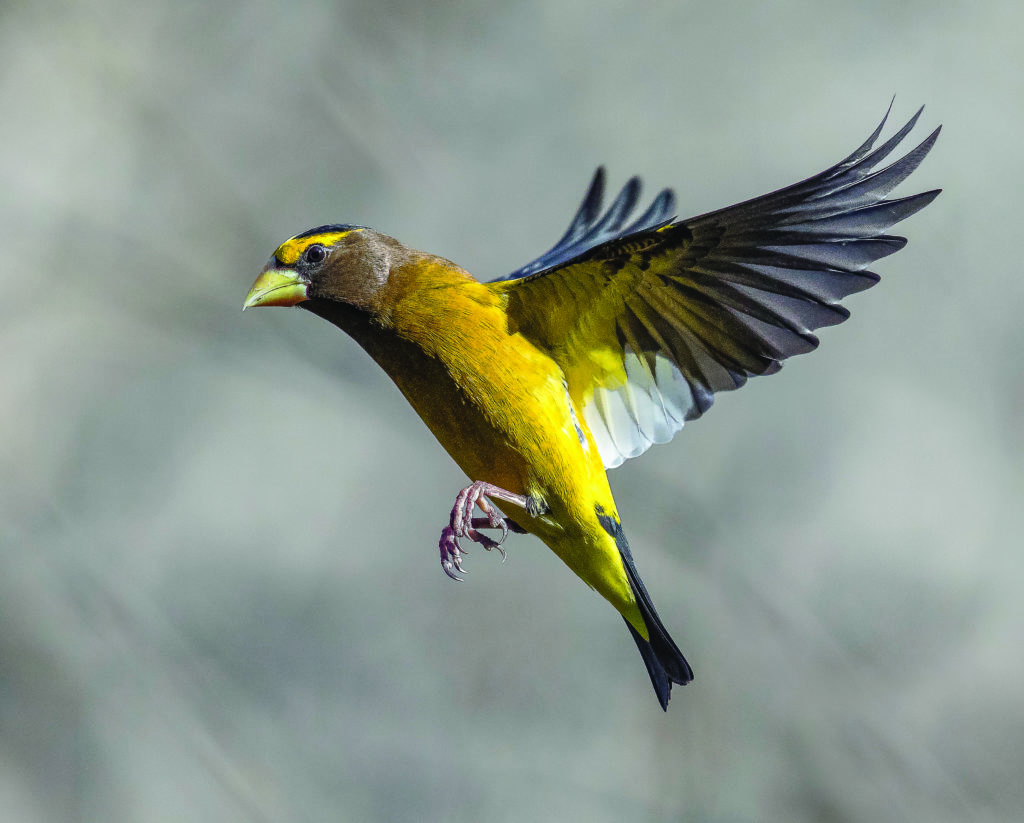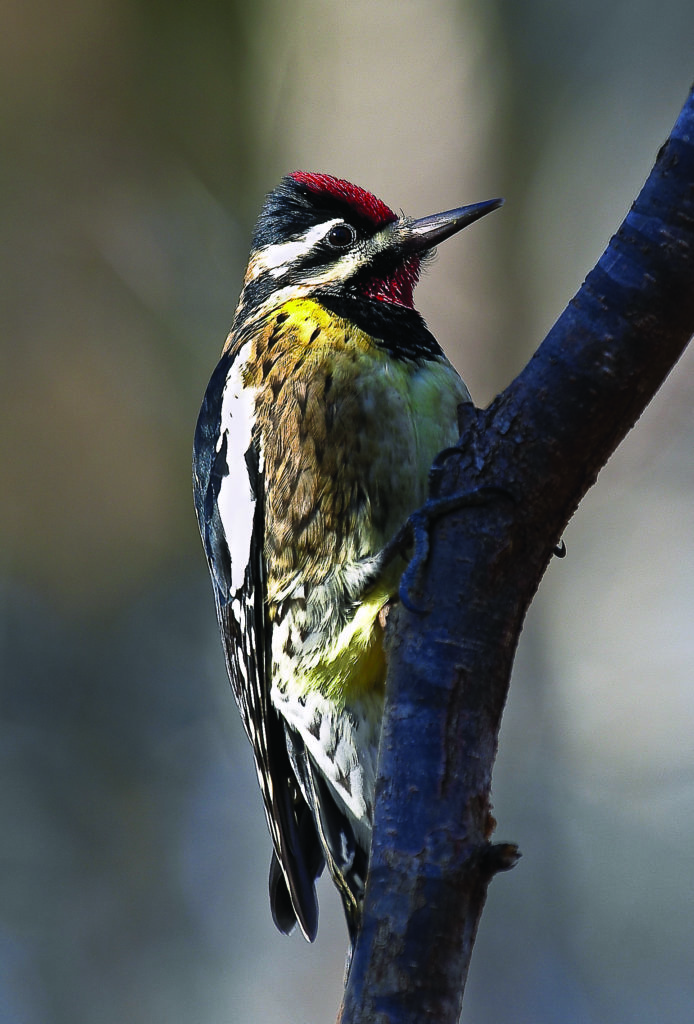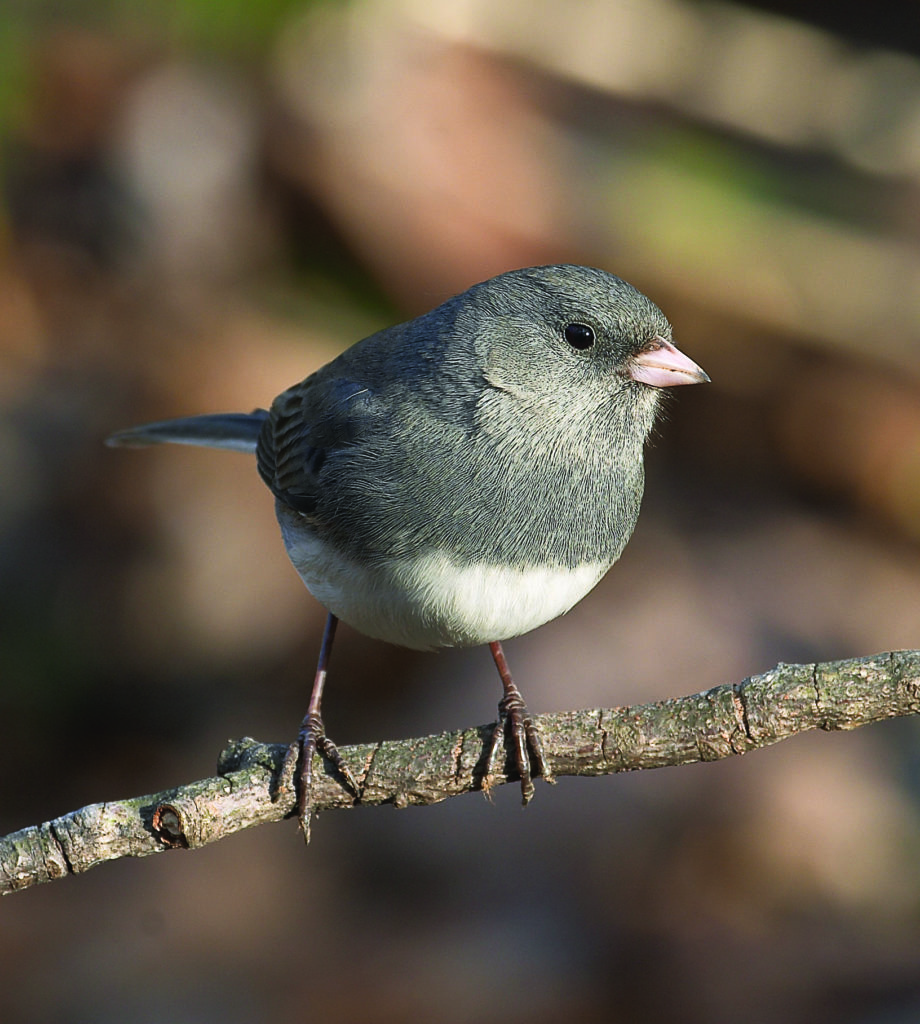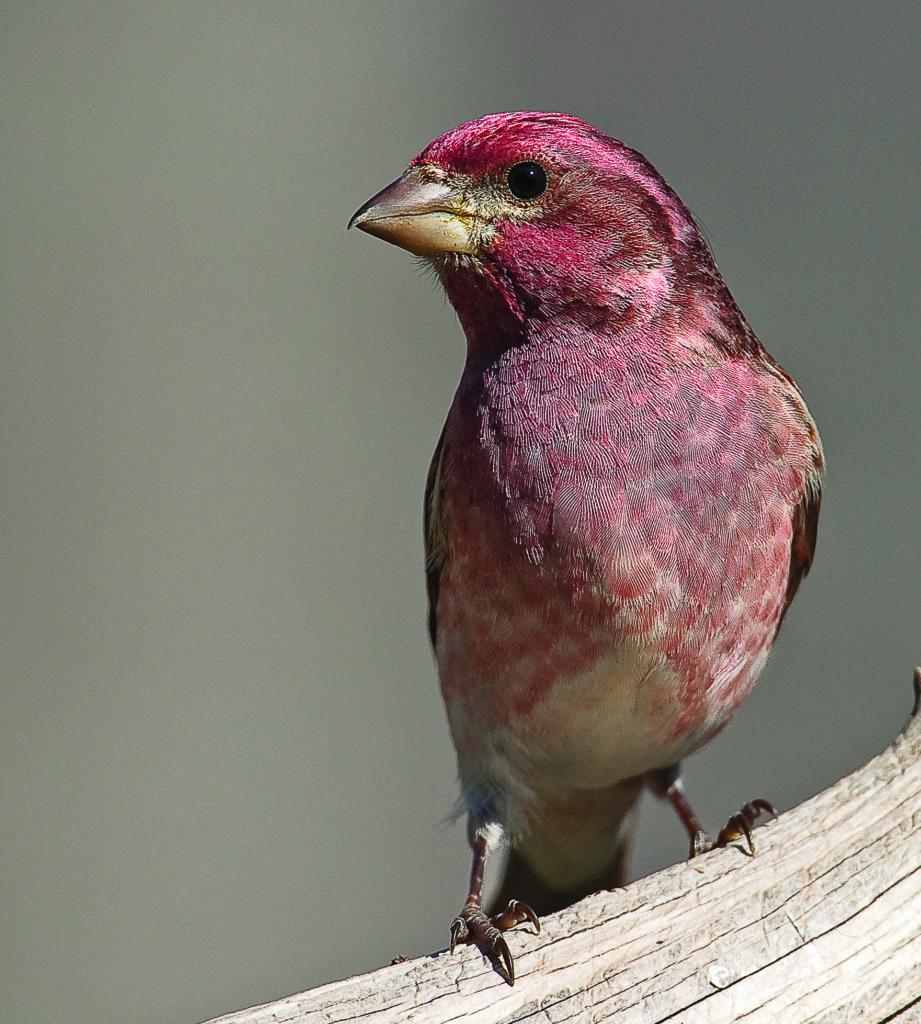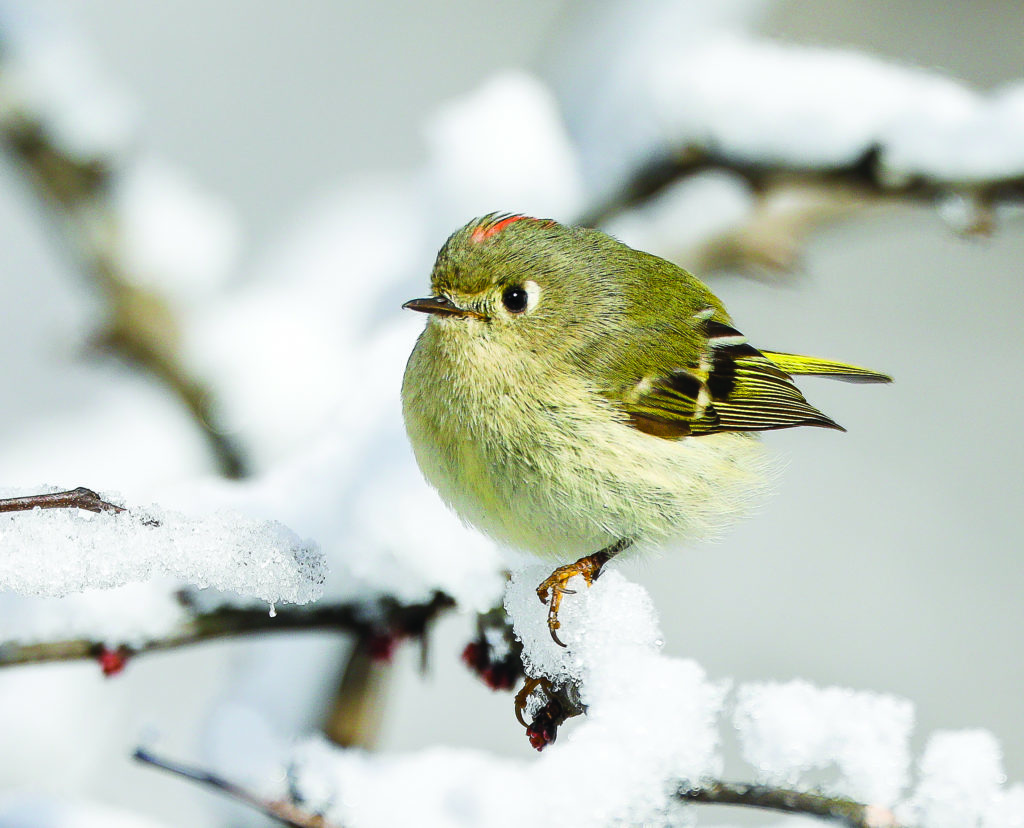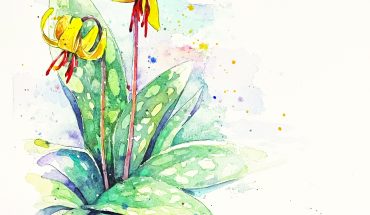As the leaves fall, another change is happening in the Piedmont: migratory birds are landing at our bird feeders. Look out for these these new arrivals.
by Mike Dunn
Bird watching is incredibly popular, but you don’t have to travel to the wilds of another country to see an incredible variety of species. If you pay close attention to your own feeder, you’ll see that late fall offers a “changing of the guard.”
At any bird feeder in the eastern United States, there are a handful of common birds we regularly see, like the Northern Cardinal, Blue Jay, Mourning Dove, Carolina Chickadee and Tufted Titmouse. Many of these birds are resident species, staying in our area all year.
But in November, we start seeing some additions to the cast of characters. Some have not traveled far, perhaps just across the state from our mountains, where they spend the summer raising their young. Others come from as far north as the boreal forest of Canada and may only visit our feeders every few years when food is scarce in the forests they call home. The timing of these birds’ arrival and how long they stay may be related to weather conditions and food availability both here and on their summer ranges.
Dark-eyed Juncos are known to many people as “snow birds,” since they often show up about the time of the first snow. They are widespread across the U.S. and have a distinctive white belly under a dark gray head, neck and back. They often show up in flocks, feeding on the ground along habitat edges and under your feeder. They nest farther north and at higher elevations, including in the North Carolina mountains. Juncos typically nest in a grass-lined cup on the ground, often along the edge of trails.
A nesting bird may stay put until the last second before flying off — more than once while hiking, I have been startled by a junco flushing out from under my feet! Northern birds migrate south each fall while many of our mountain birds undergo a “vertical migration,” from higher to lower elevations. Juncos are one of our most common winter birds and we can expect to see them between October and April.
One of my favorite winter visitors is the energetic Ruby-crowned Kinglet. They are bold and inquisitive as they flit around, flicking their wings as they go. I have even had them land on the suet feeder while I am putting it back on its hanger! Watch them closely and you may see the bold ruby-red stripe atop their tiny heads — they tend to raise those feathers when they’re agitated.
Another regular winter visitor in our woods is the subtly beautiful Hermit Thrush. They do visit our feeders, but their main diet consists of the berries on our native trees and shrubs. Years ago, my father collected some dogwood berries from his trees and refrigerated them as a bird-feeding treat. I placed some berries on our deck rail after a snow and had Eastern Bluebirds and Hermit Thrushes visiting regularly to gobble them up.
The Yellow-bellied Sapsucker has one of the best names in the bird world. The sapsucker is our only truly migratory woodpecker, nesting in northern forests and our mountains, much like the juncos. They occasionally visit suet feeders in winter, but their presence is more often detected by the telltale signs they leave on tree trunks and branches: horizontal rows of 1/4-inch diameter holes that they drill to feed on the sap of trees.
They tend to favor certain trees (maybe those with good sap flow) and may come back year after year to the same one; fortunately, the drilling generally does not harm a healthy tree. Insects are attracted to the sap, and sapsuckers and other birds will feed on the holes as well.
There is a special relationship between sapsuckers and Ruby-throated Hummingbirds. When hummingbirds return from their wintering grounds in the tropics, sometimes before many flowers are producing nectar, they often feed at sapsucker holes and have been observed following sapsuckers from tree to tree.
Purple Finches are one of the so-called irruptive species, whose numbers on the wintering grounds can fluctuate greatly from year to year, depending on food resources and weather in their northern forest habitats. They can be quite common at sunflower seed feeders in abundant years. Purple Finches are often confused with House Finches, a year-round resident in our area. Roger Tory Peterson, the ornithologist who is considered the father of the modern field guide, described male Purple Finches as a “sparrow dipped in raspberry juice.”
House Finch males tend more toward an orange-red than the wine color of a male Purple Finch. I find the easiest way to recognize Purple Finches is by paying attention to their distinct whitish eye stripe, which is especially noticeable on the females (males have a light-colored streak behind the eye as well, but it’s harder to see with their raspberry tinting).
Evening Grosbeaks are the holy grail of irruptive species here in the Piedmont. They made a spectacular appearance at feeders throughout much of North Carolina in the winter of 2021 — the last time I had seen them here before that was 1998. Grosbeaks are hard to miss when they finally show up. First, they are rather chunky, boldly patterned birds. And then there’s that bill! The name “grosbeak” comes from the French “gros bec,” which means “large beak.” That huge, conical beak is useful for crushing seeds. They were regular visitors in our yard for well over a month, going through the sunflower seeds like crazy and squabbling with one another.
Be on the lookout for these and other unusual feathered visitors this season in your neighborhood. If you see something you can’t identify, try using the free Merlin Bird ID app from the Cornell Lab of Ornithology. Its photo ID feature is really great if you can get a photo of your mystery bird.
Happy birdwatching!

